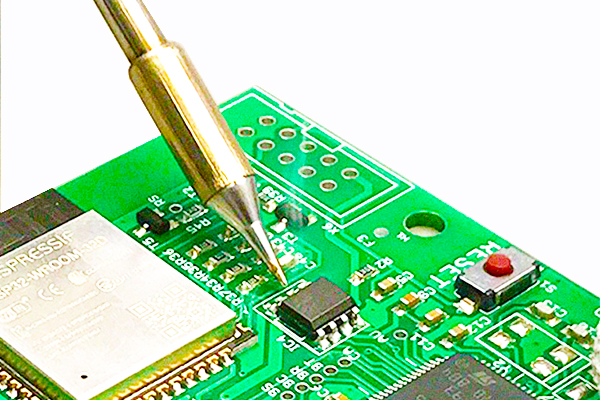

7 wrong ways to weld by hand:
a. Excessive force. Pressing hard on the solder joint with the tip of the soldering iron does not speed up the heat transfer effect.
b. Improper soldering of thermal bridges. The tip of the soldering iron cannot touch the pad before applying the solder (except for special processes)
c. Wrong size of soldering iron tip. For example, using an undersized soldering iron tip on a large pad can result in insufficient solder flow or cold solder joints.
d. Excessive temperature.Excessive soldering iron tip temperature will cause the pads to rise, affecting the quality of solder joints and damaging the substrate.
e. Improper use of flux. Excess flux can lead to corrosion and electron migration.
f. Transfer welding. Apply solder to the tip before touching the pad.
g. Unnecessary modifications and rework. Do not perform a repair operation if the standard is met.

a. Tin the tip of the soldering iron to transfer heat to the solder joint faster.
b. Solder should be applied to the pads after the thermal bridge is established - do not always apply to the tip of the soldering iron,
c. Choose the soldering iron tip that is closest to the pad size. Choose the best soldering iron tip for each soldering process.
d. Use as low a temperature as possible for soldering. If higher temperatures are required for soldering, preheating equipment is recommended.
e. Use solder wire with flux core. If necessary, use a flux pen or needle-type dispensing tool.
f. If you need a lot of tin melting, please do not use a soldering iron tip, choose a more effective method, such as a small tin furnace.
g. The modified solder joints cannot be used as the basis for acceptance. The appearance of lead-free solder joints is different from that of lead solder joints.
 WhatsApp
WhatsApp